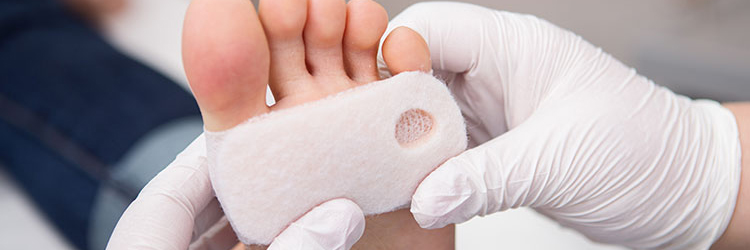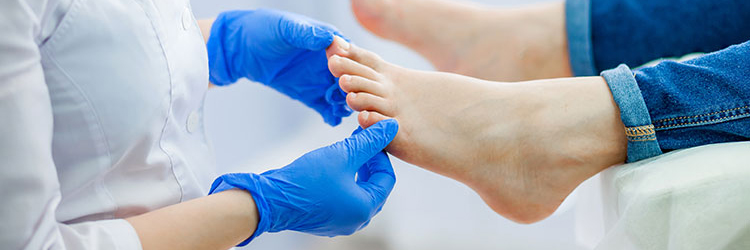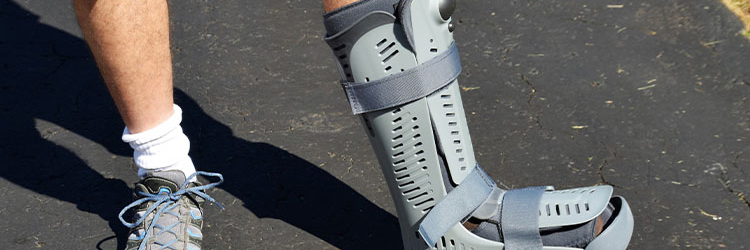What is Achilles Tendonitis?
Achilles tendonitis is a common podiatric condition that occurs when the Achilles tendon, which connects the calf muscles to the heel bone, becomes inflamed and painful. It is most commonly caused by overuse or repetitive stress on the tendon, often due to sports or other physical activities that involve ballistic activity like jumping or running. Other factors that can contribute to Achilles tendonitis include tight calf muscles, inadequate footwear, supra structural influences from the knee and hip, abnormal gait pattern, foot biomechanics and sudden increases in activity level or intensity. Symptoms of Achilles tendonitis can include pain, irritation and stiffness in the back of the ankle, swelling, tenderness. In some cases, the tendon may become thickened and develop nodules.
What are conservative treatment options for Achilles Tendonitis?
Conservative treatment options for Achilles tendonitis may include:
- Rest: Resting the affected area is important to allow the tendon time to heal. Avoid activities that cause pain or stress to the tendon, and use crutches or a walking boot if necessary.
- Ice: Applying ice to the affected area can help reduce pain and inflammation. Apply ice for 15-20 minutes at a time, several times a day.
- Compression: Using compression, such as wrapping the affected area with an elastic bandage or compression stockings can help reduce swelling and provide support.
- Elevation: Elevating the affected area above the level of the heart can help reduce swelling and improve circulation.
- Stretching and physical therapy: Stretching and physical therapy exercises can help improve flexibility and strengthen the calf muscles, reducing the risk of further injury.
- Nonsteroidal anti-inflammatory drugs (NSAIDs): NSAIDs such as ibuprofen or naproxen can help reduce pain and inflammation. These should be taken as directed by a healthcare professional.
- Orthotics: Wearing shoe inserts or heel lifts can help reduce stress on the Achilles tendon and provide additional support.
Most people fare well with conservative treatment modalities. It is important to note that while these treatments may provide relief for symptoms, they may not be able to completely cure the tendonitis. In some cases, more aggressive treatments such as may be necessary. Further imagining such an MRI may also be indicated to identify the condition of the soft tissue.
What are surgical options for Achilles Tendonitis?
Surgical treatment options for Achilles tendonitis (all performed in a outpatient surgical setting) may include:
- Percutaneous tendon debridement: This surgical procedure involves removing damaged or inflamed tissue from the Achilles tendon to promote healing. The surgery may be performed using an open or minimally invasive technique.
- Lengthening of the calf muscles: Tight calf muscles can contribute to Achilles tendonitis by increasing stress on the tendon. Lengthening the calf muscles through surgery can help reduce this stress and promote healing.
- Gastrocnemius recession: This surgical procedure involves releasing part of the gastrocnemius muscle to reduce tension on the Achilles tendon
- Percutaneous radiofrequency coblation: This minimally invasive procedure involves making a small incision and using a special instrument to break up scar tissue and promote healing of the Achilles tendon.
- Tendon transfer: In some severe type cases, a tendon transfer may be performed to repair a severely damaged Achilles tendon. This involves taking a tendon from another part of the body, such as the flexor hallucis longus, and using it to replace the damaged Achilles tendon.
Surgical treatment for Achilles tendonitis is usually reserved for cases where conservative treatment options have failed to provide relief, and the patient is experiencing severe pain and reduced mobility. It is important to discuss the risks and benefits of surgery with your doctor to make an informed decision about your treatment plan. Come in for a consultation at PS Foot and Ankle and we can provide a personalized individual plan.






